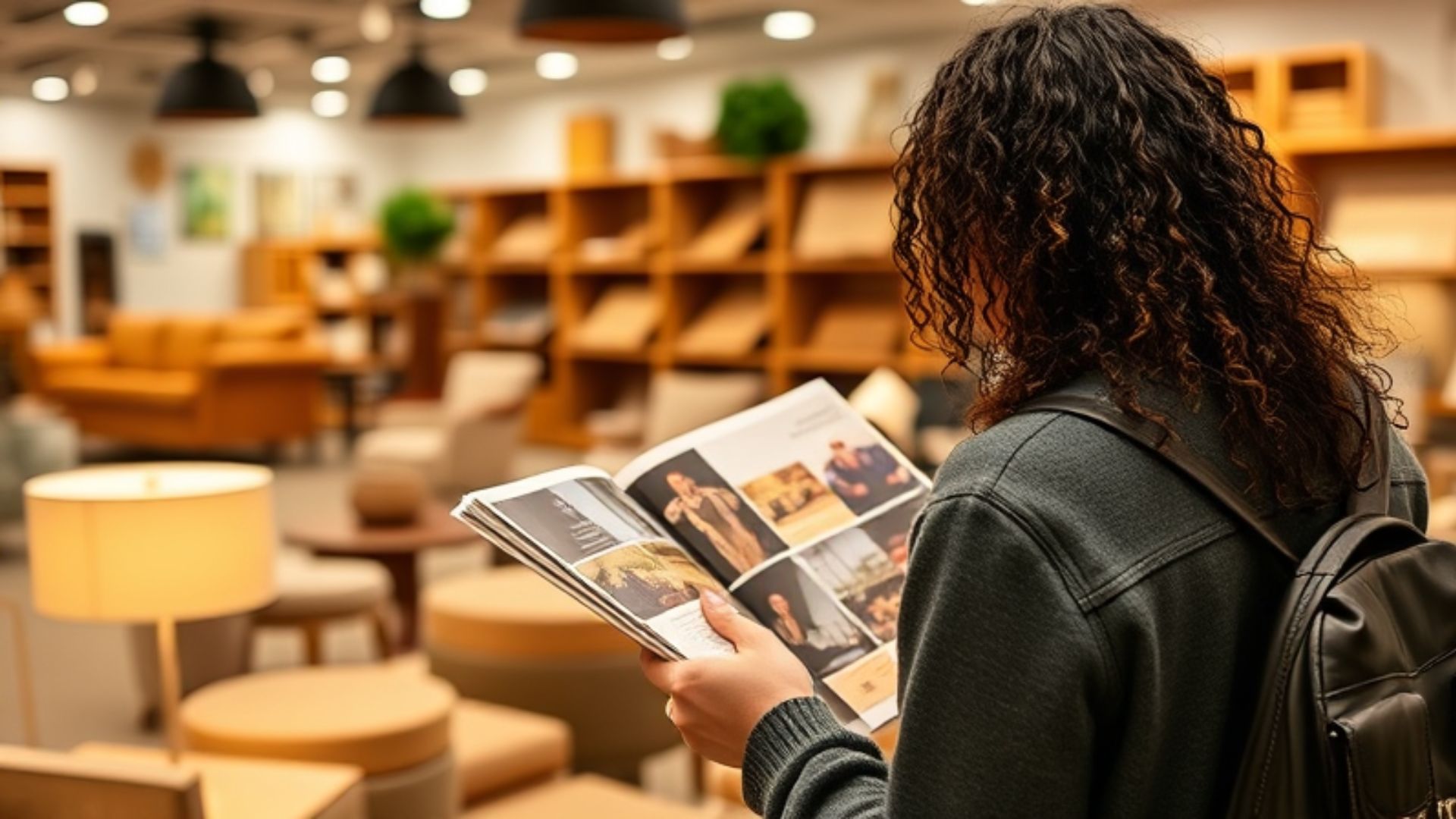
The inviting touch of physical catalogues are always welcoming, it able to create such immersive feeling to actually feel the connection in between the customers with the products. While most brands have moved forward to the new era of digitalization, non-online catalogue could actually feel more power as it evoke very strong nostalgia feeling just by holding a high quality printed material.
The Allure of Physical Catalogues
Physical catalogues possess a certain classic appeal, inciting nostalgia and giving rise to a tangible connection to the brand that often feels more personal than a straight-up digital advertisement. While online content can be scrolled past in seconds by a customer, catalogues give them that product and allow time for interaction. They are portable and shareable, and browse distraction-free.
Studies find that physical media tend to help keep customer learning retention high. Because of the texture, weight, and other inclusionary factors, printed materials will give the customer a sensory experience along with brand recall. Catalogues are, most especially, a premium touchpoint for luxury and lifestyle brands that reflect the quality and care associated with their products.
The Digital Complement
While physical catalogs excel in making emotional connections, digital strategies possess the scalability and precision that modern marketing requires. Adding some digital elements into catalogs also increases their usability, ensuring they remain relevant in today’s tech-savvy ecosystem. Here’s how brands are bringing things together:
- QR Codes and Augmented Reality (AR) : Modern catalogs are commonly featuring QR codes that direct users to product pages, videos, or interactive experiences. For instance, IKEA include a QR code that allows consumers to visualize how a sofa would look in their living room through augmented reality.
- Shoppable Content : Brands are incorporating scannable links leading directly to their e-commerce platforms. This seamless transition from print to purchase lessens the journey and increases chances of conversion.
- Personalized Recommendations : Using customer data, brands can create catalogs containing products and offers that are a good fit based on individual preferences. A unique code or link embedded in the catalog will direct users to a tailored digital experience.
- Sustainability Messaging : Many firms leverage the opportunity to showcase their commitments to being eco-friendly within their catalogs. By directing readers to web resources that detail sustainability initiatives, brands reaffirm their commitment to eco-friendliness.
The Enduring Power of Print
- LEGO : LEGO catalogs are faves among kids and grownups alike. The brand brings the physical and digital together via the addition of QR codes leading consumers to exclusive online content, including product animations and building instructions. This approach captures the interest of audiences across platforms.
- IKEA : IKEA catalogues have long been symbols of viability. While the company has shifted toward a digital-first approach these days, there are still a few print editions here and there. These catalogues often have QR codes and AR features so customers can play with room designs interactively.
- Anthropologie : Anthropologie’s catalogues are works of art that feature the brand’s unique design sensibility. A deft mixture of stunning photography, live links to digital look books and shoppable pages creates seamless passageways from print to online experiences.
Crafting a Balanced Strategy
Brands that are looking to marry physical catalogues to their digital strategies would need to find the balance. Here are some ideas:
- Get Into the Audience Mindset : Figure out whether your audience is print-driven or not. This is especially playable against the older demographic; luxury consumers, and niche hobbyists, feel a visual high when holding catalogues.
- Invest Time and Money in Good Design : Aim for top-quality design and great materials for the catalogue. A really beautiful, well-designed catalogue can find a place on the coffee table, ensuring it remains in consumers’ homes longer.
- Use the Information You Have : Leverage customer insights to focus catalogue contents and digital integrations. The more personalized the experience, the more engagement they’ll see.
- Encourage Multi-Channel Engagement : Enable users to engage with the brand across any platform. It means doing something like offering online-only discounts or access to catalog links for exclusive content.
- Don’t Forget to Tell Them About Sustainability : Print catalogues may pose some serious green issues, so use recycled material and promote your sustainability efforts right there in the catalogue.
The Future of Paper and Pixels
The physical-digital merger is not any trend but rather a manifestation of the transformation in consumer needs. With the collaborative leverage of both worlds, brands can identify more holistic experiences that leave a deep resonation with the audience. Henceforth, physical catalogs that use digital tools are not obsolescent artifacts but rather critical tools that enable leading marketing strategies.
As technology increasingly permeates our world, the continued appeal of print therein serves as an encouraging reminder that some traditions deserve preservation, especially when they are contextualized to the wants of the contemporary consumer. The fusion of paper and pixels is not only an innovation but represents the direction in which marketing is heading.







